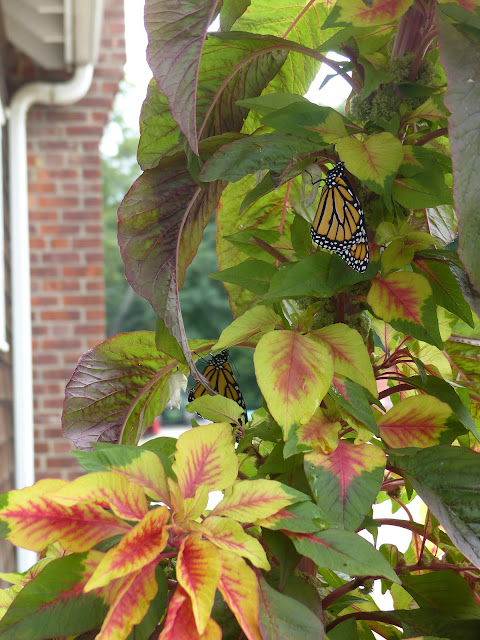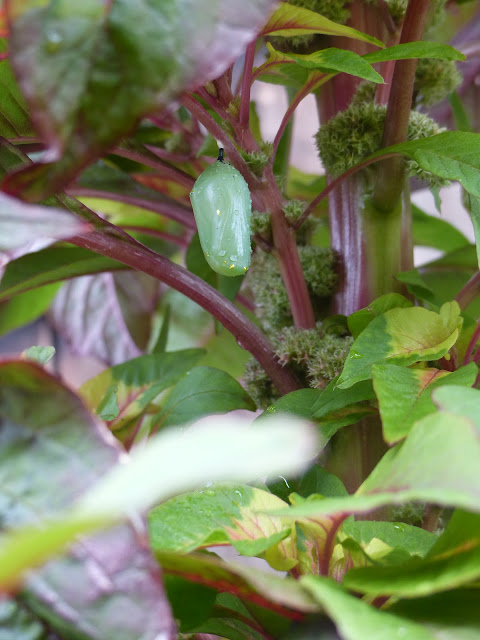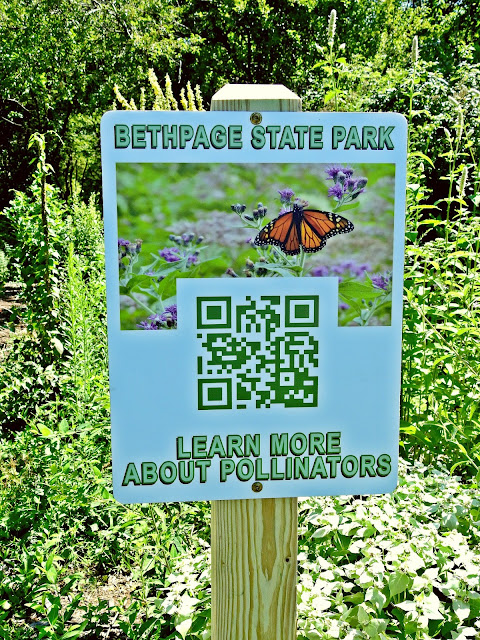Monarch Hotspot Behind Maintenance Shop, Proves Even The Smallest Flower Boxes Can Aid Pollinator Conservation


While much of my time has been spent monitoring these types of protected pollinator spaces, this year our maintenance crew brought my attention to another location...one, small flower box behind the mechanic shop, bursting with color and absolutely COVERED in monarch caterpillars!
Without a doubt, some serious monarch magic was happening here! This hot spot was first noticed by our mechanic Robbie, who works in the shop right outside this flower box. He says that hes watered this spot for years but this season the flowers planted here seem to be doing exceptionally well at attracting our pollinator of interest, more so than ever before!
The second I heard this news, I was there watching and counting as many caterpillars as I could on tropical milkweed...which at that moment, seemed barely recognizable; dozens of hungry caterpillars chewed up all the foliage, right down to the stem. Even the flowers and seedpods were gone!
 While tropical milkweed is definitely what enticed adult monarchs to lay their eggs at this spot, I believe the other plants in the box also provide favorable conditions for rearing healthy caterpillars. This is important because monarch butterflies, like most insects do not not provide parental care, they just oviposit (or lay their eggs) and move on.
While tropical milkweed is definitely what enticed adult monarchs to lay their eggs at this spot, I believe the other plants in the box also provide favorable conditions for rearing healthy caterpillars. This is important because monarch butterflies, like most insects do not not provide parental care, they just oviposit (or lay their eggs) and move on.In these photos to the right and below, you can see monarchs using the amaranthus tricolor, a very tall and colorful plant growing in the flower box. It is clear that monarchs are finding use for this plant at different developmental stages.

While not edible to the monarch caterpillar, this plant probably allows the right amount of shade while also providing a strong structure for the monarch caterpillar to use for its chrysalis. Staying out of harms way during this stage is extremely critical, as monarchs will remain stationary for up to two weeks until its ready to emerge as an adult butterfly.
Are you able to spot the monarch butterflies that have just emerged from its chrysalises in the photo below?
Once they break free from their casings, they wait until their wings have dried before they begin to move.
The lantana plants in our flower box (below) were also another great plant that the monarch caterpillars utilized. I almost overlooked these two chrysalises, hidden in the dense lantana leaves covering the bottom of the flower box. Not to mention, when these monarchs emerge, lantanas are a great source of nectar (which they will need considering the tropical milkweed flowers are all gone)!
Perhaps what was most exciting about this flower box was that if you waited around long enough, you could actually witness the monarchs transitioning between stages. I was fortunate enough to be there monitoring the site when a caterpillar was beginning its pupation process.
Upon closer inspection, you can see the silk that the caterpillar has created to anchor itself to the milkweed plant. The "J" shape of its abdomen is a clear indication that pupation has begun!
When I returned a few hours later, the caterpillar was a fully developed chrysalis (see below).
All in all, I found this location absolutely incredible!! Monarch activity was so prevalent here, I made sure to monitor and record my findings repeatedly throughout the summer. I realized that some caterpillars were more creative than others, thinking outside the box (pun intended!) when choosing a location to pupate. This forced me to be even more observant.
 |
| Tire near the flower box |
 |
| Above the flower box, under the roof of the mechanic shop |
It is safe to say that what was originally thought of as a simple ornamental flower box behind a maintenance building is NOW considered a prized monarch haven... and better yet, a pupation watch station!
This location also gave me the perfect opportunity to educate our golf course staff about monarch metamorphosis, while being able to watch it in action too. How cool!















Comments
Post a Comment